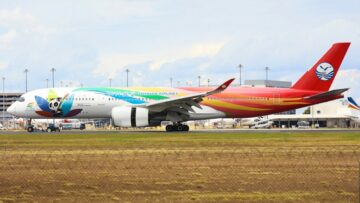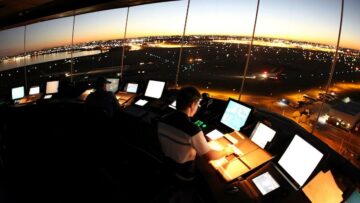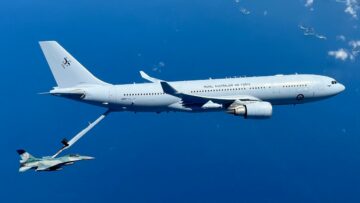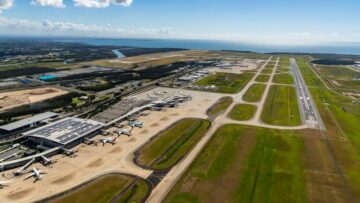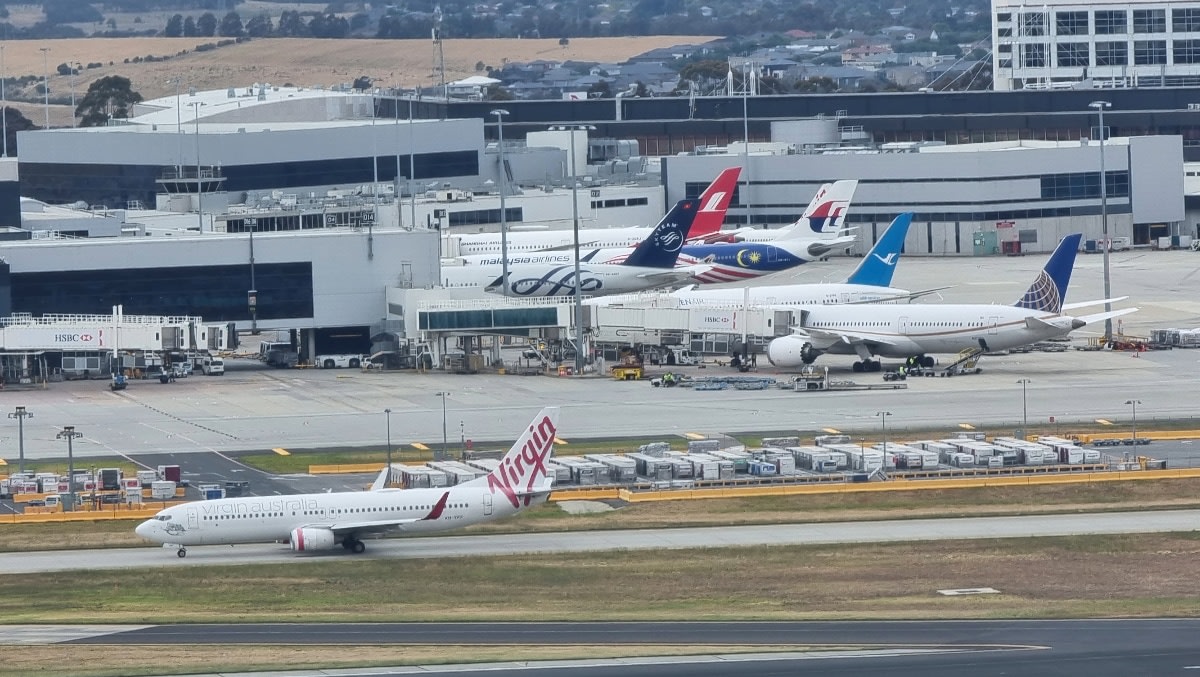
Melbourne Airport has seen its busiest month since the start of the pandemic, with more than three million passengers through its terminals in December 2023.
Last month was the first time since January 2020 that Melbourne saw more than one million international passengers, with the airport also setting a new all-time monthly record for international flights at 4,976, breaking January 2020’s record of 4,834.
In total, 3,087,149 passengers passed through Melbourne’s terminals in December, comprising 1,037,138 international and 2,048,911 domestic travellers. This represents a 92.8 total recovery on December 2019, with domestic 91.4 per cent recovered and international 95.9 per cent recovered.
The airport saw a total of 14,832 domestic flights for the month, representing 95 per cent of services flown in December 2019.
According to Melbourne Airport CEO Lorie Argus, international travellers were up 35 per cent year-on-year as carriers including Jetstar, Aircalin, Air India, and Asiana launched or resumed services.
“Despite the current cost-of-living pressures, many families are prioritising travel and any extra capacity we can bring to the market increases competition and choice for travellers,” she said.
“These flights also provide local exporters with increased opportunities to send goods into foreign markets, with an average daily international flight worth $154 million to the Victorian economy.
“In 2024 we look forward to bringing more seat capacity to Victoria and opening up new markets to our state.”
Ahead of Christmas, Melbourne Airport predicted more than 4.2 million passengers between 20 December and 29 January, including more than 1.56 million international passengers. This forecast was released shortly after Melbourne became the first airport in Australia to exceed its pre-pandemic international capacity.
“It’s exciting that we will no longer be benchmarking ourselves against pre-pandemic levels in the international market, but instead setting new records,” said Argus last month.
Following Asiana’s commencement of services between Melbourne and Seoul on Boxing Day, Melbourne Airport now also has the largest number of international carriers in its history, with a total of 38. The airport’s chief of aviation, Jim Parashos, hailed this as a significant milestone.
“This is testament to the efforts of teams at both Melbourne Airport and the Victorian State Government, who have worked in partnership to secure capacity as airlines brought aircraft back into service,” he said.
“This benefits passengers by helping to put downward pressure on airfares, and gives exporters more options when sending high value, time critical goods into foreign markets.
“Because of this, an average daily international flight is worth $154 million a year to the Victorian economy.”
- SEO Powered Content & PR Distribution. Get Amplified Today.
- PlatoData.Network Vertical Generative Ai. Empower Yourself. Access Here.
- PlatoAiStream. Web3 Intelligence. Knowledge Amplified. Access Here.
- PlatoESG. Carbon, CleanTech, Energy, Environment, Solar, Waste Management. Access Here.
- PlatoHealth. Biotech and Clinical Trials Intelligence. Access Here.
- Source: https://australianaviation.com.au/2024/01/melbourne-airport-marks-busiest-month-since-2019/
- :has
- :is
- $UP
- 1
- 14
- 20
- 2019
- 2020
- 2023
- 2024
- 29
- 35%
- 8
- 9
- 91
- a
- After
- against
- AIR
- Air India
- aircraft
- Airlines
- airport
- also
- an
- and
- any
- ARE
- AS
- At
- Australia
- Australian
- average
- aviation
- back
- BE
- became
- benchmarking
- benefits
- BEST
- between
- both
- Boxing
- Breaking
- bring
- Bringing
- brought
- but
- by
- CAN
- Capacity
- carriers
- cent
- ceo
- chief
- choice
- Christmas
- COM
- competition
- comprising
- critical
- Current
- daily
- day
- December
- Domestic
- downward
- economy
- efforts
- exciting
- extra
- families
- First
- first time
- flight
- Flights
- For
- Forecast
- foreign
- Forward
- gives
- goods
- Government
- Have
- he
- helping
- High
- high value
- history
- HTTPS
- image
- in
- Including
- increased
- Increases
- india
- instead
- International
- into
- ITS
- January
- Jim
- jpg
- largest
- Last
- launched
- levels
- local
- longer
- Look
- many
- Market
- Markets
- max-width
- Melbourne
- milestone
- million
- Month
- monthly
- more
- New
- no
- now
- number
- of
- on
- ONE
- opening
- opportunities
- Options
- or
- our
- ourselves
- pandemic
- Partnership
- passed
- past
- per
- plato
- Plato Data Intelligence
- PlatoData
- pressure
- pressures
- provide
- put
- record
- records
- recovery
- released
- representing
- represents
- Said
- saw
- secure
- seen
- send
- sending
- service
- Services
- setting
- she
- Shortly
- significant
- since
- start
- State
- teams
- Terminal
- testament
- than
- that
- The
- this
- three
- Through
- time
- to
- Total
- travel
- value
- Victoria
- Virgin
- was
- we
- were
- when
- WHO
- will
- with
- worked
- worth
- year
- zephyrnet

